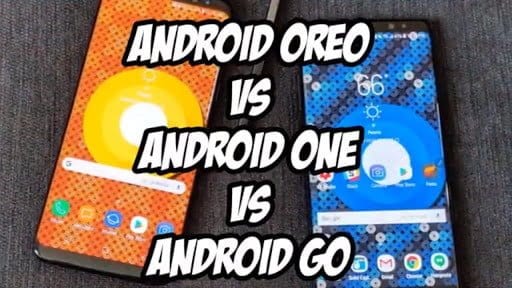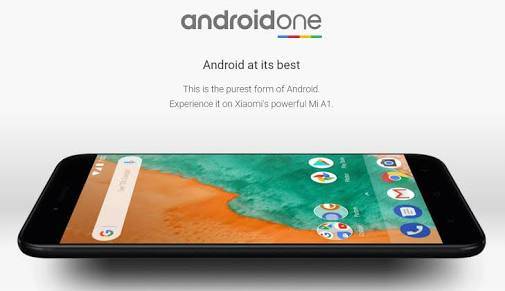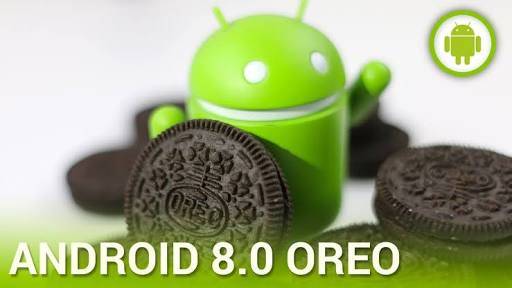Android Oreo VS Android One VS Android Go – a detailed explanation. It’s safe to say the past few years has been a busy time for Google Inc. The giant tech firm now has three different approaches to their mobile operating system (Android). The Android mobile operating system is used by over a billion people worldwide, which makes them one of the best software providers.
Page Contents:
The approaches or flavors are Android, Android One, and Android Go. All three software has a few things in common. And at the same time has features that differentiate them from each other. The purpose of this article is to help users to not get them all mixed up. We’ll be discussing each of the flavors, their features and the devices that run on them.
Android Oreo VS Android One VS Android Go – The Basics
Android One
Google Inc. introduced the Android One initiative back in 2014. The software targeted mid-range smartphone users at the beginning but has now grown. It’s now capable of running on high-end smartphones, a typical example of that is Nokia’s Sirocco 8 smartphone. The Android One gives smartphone users stock Android experience. Android One and Stock Android have now been used interchangeably ever since them. Since the Android One software is coming from Google themselves.
Stock Android used to run on the Nexus line of smartphones like the Nexus 5X and Nexus 6P. But now the stock Android is found on Google’s own Pixels smartphones. The most fascinating aspect of the Android One is that all the updates are handled by Google themselves. The Android One is the purest form of Android with no customization or skin, which is why it’s usually referred to as Stock Android.
Android Oreo
Google releases a new version of Android every year. The version is given different number and name. The Android 8.0 codenamed Oreo is the 8th version of the tech giant’s mobile operating system. The part of Android Open Source Project (AOSP) sees Google publish the source code of their Android software and anybody including you can make use of it. You can build it around a smartphone, tablet or anything deem compatible with it.
But getting the source code of Android doesn’t mean you get to enjoy Google Mobile services such as YouTube, Google Maps, Chrome, Play Store and the likes. You’ll need a certification to enable you to use the mobile services from Google. Most OEMs companies add their skin or user interface to the Android OS to manufacture their smartphones. The user interface includes MIUI from Xiaomi, EMUI from Huawei, Sense from HTC, ColorOS from Oppo and so on.
Android Go
The Android Go is specifically designed for low-end smartphones with a 1GB or less memory. Smartphones running on Android Go will come with pre-installed “Lite” or “Go” versions of Google Mobile services. Such apps are Gmail Go, Maps Go, Search Go, Google Assistant Go and so on. All of these apps will take up less space on those budget smartphones running on 8GB internal storage. And at the end, users will still be left with up to 5GB of internal storage.
There are no restrictions in the world of Google. So users can still install the normal version of these apps at their own risk. The key difference between the Android Go and Android One is that the Android One comes directly from Google. While for the Android Go, Google sends it to the phone maker, and they release it to their users. This means that the phone maker handles the updates and security issues for the Android Go. While for the Android One smartphones, Google takes care of updates and security issues.
Android Oreo VS Android One VS Android Go – The Features
Android One features
• Regular security updates from Google for three years
• The core Android user interface, free from customizations
• Receives Android operating system updates for two years guaranteed
Android Oreo features
Besides from the general Android features you’ll see on other versions. The Android Oreo has its unique features, you won’t find on versions like the Android Nougat or Android Marshmallow.
• Split-screen apps – The Android Oreo is capable of splitting your smartphone’s screen, enabling you to operate two apps simultaneously. You can reply to a message on WhatsApp and still browse using Chrome.
• Picture-in-picture mode – This mode allows users to watch a video via a thumbnail in a corner of the screen while using another app at the same time.
Android Go features
• Lite versions of Google Mobile services
• Provides more storage space to end users
• Stripped of any unnecessary bloatware
• Google’s Data Saver service – saves data by providing tools, which will restrict background data access.
Android One VS Android Oreo VS Android Go – The devices that run them
Android One smartphones
• Xiaomi Mi A1
• Infinix Note 5
• Nokia 7 Plus
• Nokia 8 Sirocco
• Motorola Moto X4
Android Oreo smartphones
• Samsung Galaxy S9
• OnePlus 6
• Xiaomi Mi 8
• HTC U12 Plus
• Huawei P20
Android One smartphones
• iTel A32F
• ZTE Tempo Go
• iTel P32
• Alcatel 1
• Tecno Spark 2
Android Oreo VS Android One VS Android Go – Conclusion
Android Oreo VS Android One VS Android Go. In summary, Android Oreo is the 8th version of Google’s operating system. Android One is run by Google and they handle it’s updates and security issues. The difference between the Android One and Stock Android is that Google also handles the hardware of the stock Android smartphones. Unlike the Android One, the updates and the security issues are being handled by OEMs companies.
Are you using an Android Oreo smartphone? Android One smartphone? Or Android Go smartphone? What’s your experience with them? Feel free to let us know down in the comment section below.




